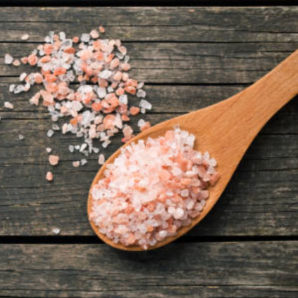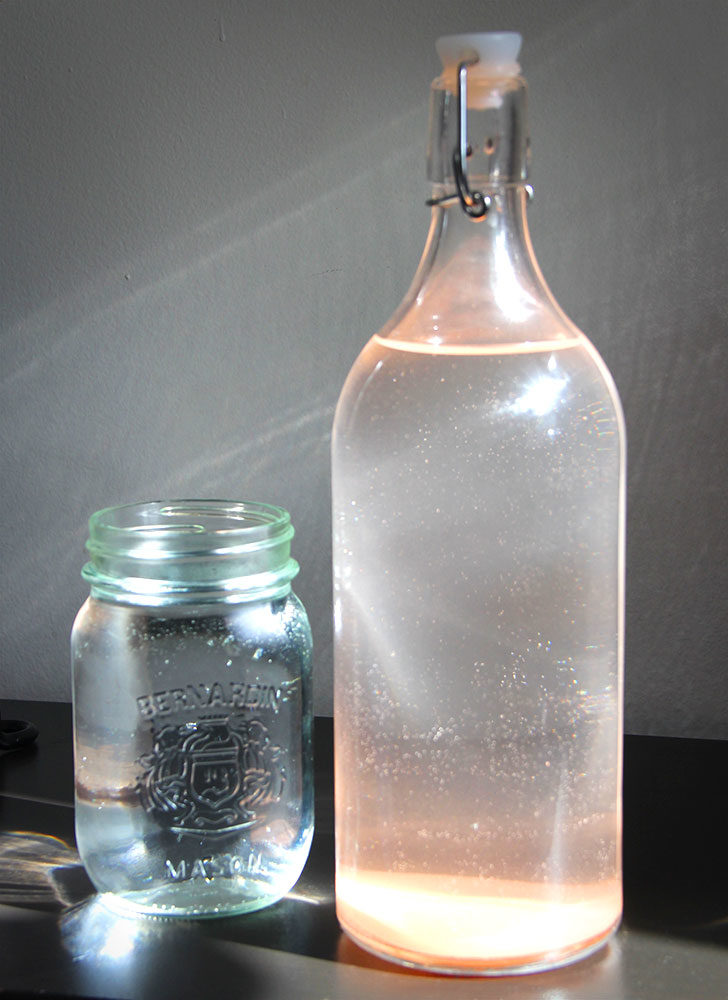
What is Sole?
Sole (pronounced so-lay) is a fully saturated solution of pure water and high quality, unrefined Himalayan crystal salt.
When you dissolve as much unrefined Himalayan salt into water as possible, you are essentially making your own bio-available multi-mineral supplement solution. Look at us, doing chemistry! The minerals from this simple, briney mixture can promote all kinds of health benefits.
What is Sole?
Sole (pronounced so-lay) is a fully saturated solution of pure water and high quality, unrefined Himalayan crystal salt.
When you dissolve as much unrefined Himalayan salt into water as possible, you are essentially making your own bio-available multi-mineral supplement solution. Look at us, doing chemistry! The minerals from this simple, briney mixture can promote all kinds of health benefits.
What is Sole?
Sole (pronounced so-lay) is a fully saturated solution of pure water and high quality, unrefined Himalayan crystal salt.
When you dissolve as much unrefined Himalayan salt into water as possible, you are essentially making your own bio-available multi-mineral supplement solution. Look at us, doing chemistry! The minerals from this simple, briney mixture can promote all kinds of health benefits.

I experienced the first 7 benefits on this list after using Sole for two weeks.
[ Go To Sole Recipe ]
Wait a sec, salt? Isn’t salt bad?
We have pretty much been programmed to be afraid of salt when it comes to taking care of our health. However, there is big difference between not-so-healthy, conventional table salt and natural, beneficial salt like Himalayan pink salt.

Table Salt
Table salt has most of its valuable minerals removed during processing.
Without the right balance of other naturally occurring minerals, such as potassium, calcium and magnesium, which are present in salt before it is refined, our body doesn’t know how to process the large amount of sodium and chloride that is left over, which we call ‘table salt’. Although our bodies do require sodium (nerve impulses, fluid balance, heart function, muscle contraction) and chloride (nerve impulses, digestion), too much of these substances without their balancing elements can throw our bodies out of homeostasis and lead to health issues like high blood pressure, heart dis-ease and hormone and adrenal issues.
Table salt is ‘cleaned and conditioned’ with chemicals.
To make table salt, raw salt is bleached and refined through a chemical process, removing valuable minerals and leaving traces of chemicals, like ammonia. Aluminum, which is toxic to our bodies, is also found in table salt, as it’s used in chemical processing and sometimes as an anti-caking agent to prevent clumping and make sure that the granules flow nicely through your salt shaker.
Unfortunately, this is the type of salt that is in most shakers, and added in high quantities to many pre-packaged and processed foods.

Himalayan Pink Salt
Himalayan pink salt contains all 84 minerals and trace minerals that the body requires, and in ratios that support one another, so we can absorb and utilize them properly.
What's the big deal about minerals? Why do I need them?
There are so many reasons! Here is but a small selection:
- The body can’t manufacture its own minerals
- Vitamins can not be assimilated without minerals
- All tissues and fluids throughout the body contain minerals
- Minerals are components of bones, teeth, muscles, blood, nerve cells and soft tissue
Minerals are the spark plugs of the body! They are catalysts for many of the body’s biological functions and reactions.
- Transmitting messages through the nervous system
- Hormone production
- Nutrient assimilation
- Energy production
- Muscle response
- Blood formation
- Digestion
- Collagen formation
Why Aren’t We Getting Enough Minerals?
We, and our food, are made of the same material as the planet. Like us, soil is a living organism containing enzymes, bacteria, proteins, vitamins and of course, minerals: iron, copper, magnesium, sulphur, zinc and more. We get our minerals from the food that comes from the earth, and our food’s nutrient content depends upon the soil’s nutrient content.
Modern industrial farming practices have stripped the soil of increasing amounts of nutrients.
In a 2002 Toronto Globe and Mail article about this subject, reporter Andre Picard wrote:

Less minerals and nutrients in the soil = less minerals and nutrients in the food = less minerals and nutrients for us.
OMG, Why Didn’t Anyone Tell Me This? What Do We DO?
Soil integrity and health have been ravaged by industrial farming practices, so it makes sense to avoid food that is produced by these companies. Here’s what we can do instead:
Buy Organic or From Small Local Farms
These kinds of farms implement more conscious farming methods that often include crop rotation, companion planting, composting and forgoing pesticides and fertilizers in favour of natural growing methods that take care of the soil.
Using your dollars toward organic or small local farms contributes to your health, the health of these small businesses and the health of the earth. This means that we can have more of these conscious businesses in our (hopefully near) future.
Grow Your Own Gardens
If you have some land, get yourself some seeds and take control of the quality and health of your food source. This saves a bunch of money too!
Get Involved in Food Shares & Coops
These organizations get their goods from locals providers and sell them to you at great prices. They often have the option of a small membership fee, volunteer work or a guest-shopper surcharge if you just want to try it out with no commitment. Many will also give you a 1-month trial shop at their lowest prices so you can get a feel for what’s being offered. It’s a great way to build and be part of a sustainable community.
Here is a directory for Food Co-ops in North America: https://www.grocer.coop/coops
Educate
Start with one small thing. When you find something that’s working for you, share it with everyone!
But I digress…
OK! Let’s get back to being magical chemists and making Sole. Olé!

How to Make Sole
Recipe:
- 1 large glass container with a non-metal or plastic lid (a large mason jar or Ikea-type flip-top water bottle work well)
- 1-2 cups of high quality, pure Himalayan salt
- Filtered water
Instructions:
- Add salt to the container, filling to about 1/4 full.
- Add filtered water, leaving an inch of space at the top.
- Put the lid on and gently shake.
- Let the container sit 8-12 hours or overnight. There’s no need to refrigerate.
- If there are no salt crystals left in the container, add more salt, shake and let it sit for another 8-12 hours.
- If there are still some salt crystals left, this is great. The water has absorbed the maximum amount of salt and the Sole is ready. There will always be some unabsorbed salt in the bottom of the Sole container.
How to Use:
In the morning, add 1 tsp of Sole to a glass of water and drink it on an empty stomach. Use a non-metallic measuring spoon and don’t touch the Sole with any metal utensils.
You can gradually add more Sole to your water over time, if you like, but start slowly, to avoid detox reactions, like headaches.
Sole can be stored at room temperature and lasts indefinitely.
Though Sole helps to hydrate cells, it’s still important to drink about 2 litres of water per day. For more info on pure water and its importance, read my article, The ‘Limitless’ Drink.
As with any health info, those who are pregnant or nursing or those with heart disease, hypertension or kidney disease or should consult with a qualified practitioner before adding new supplements.